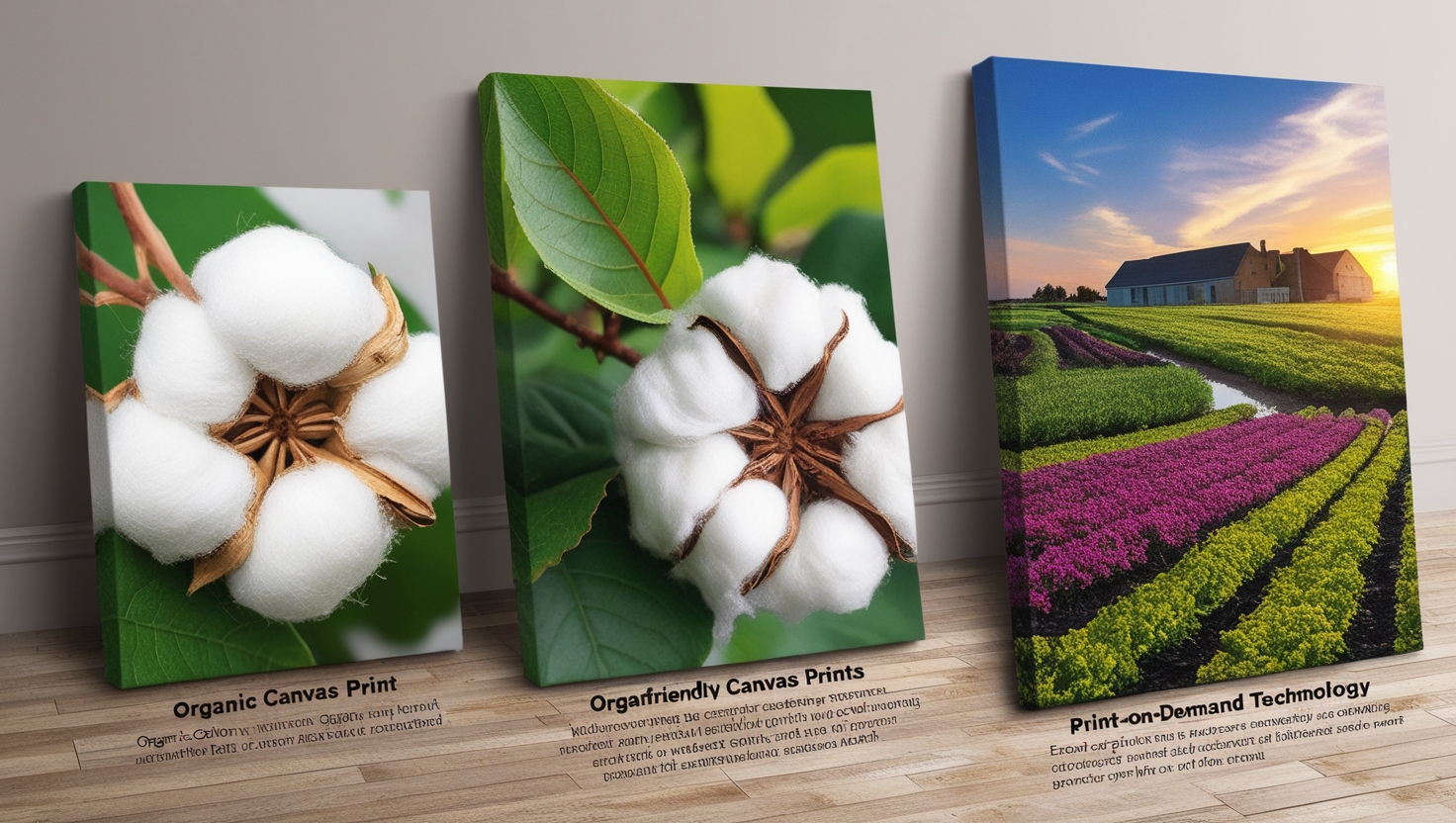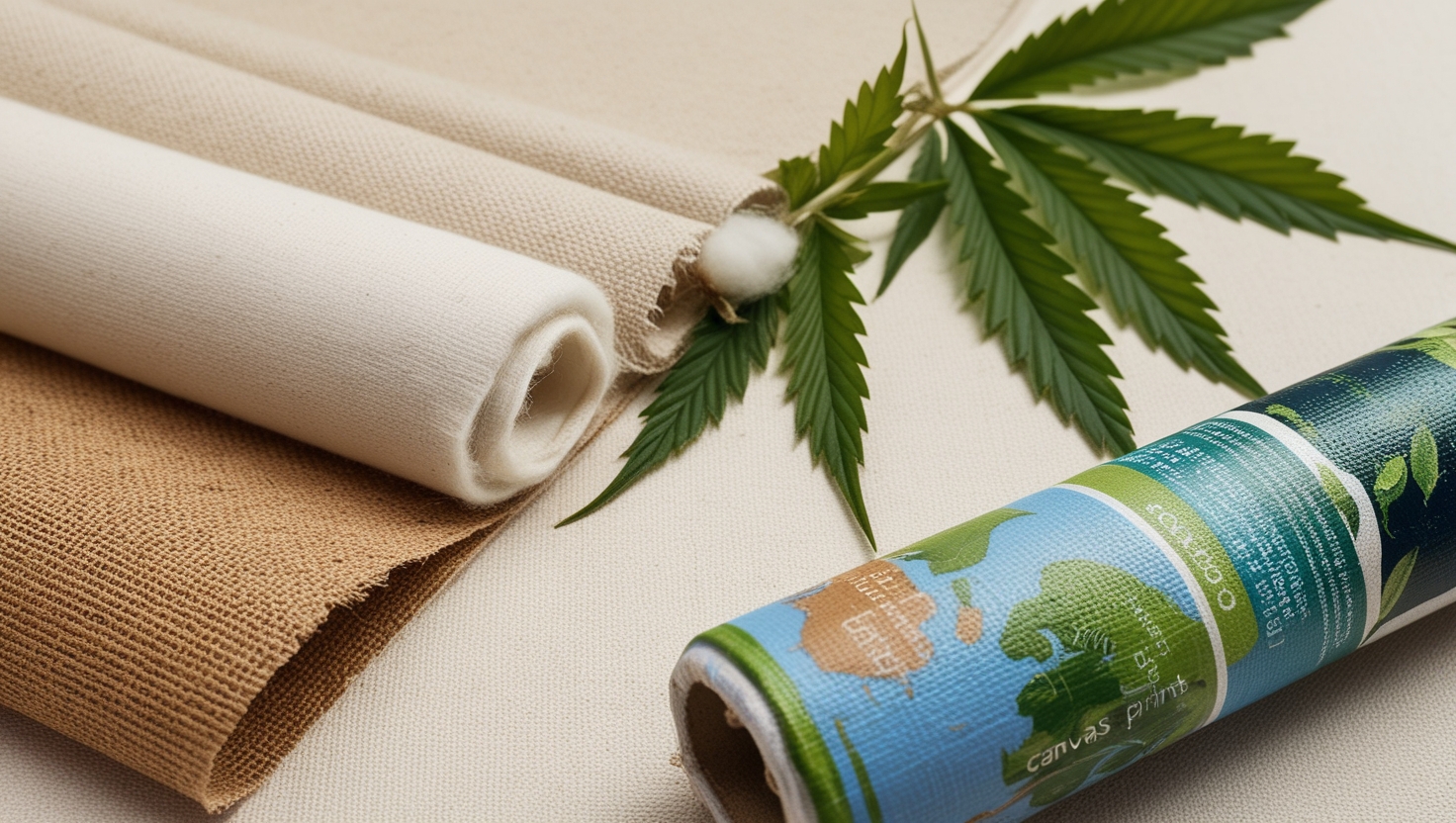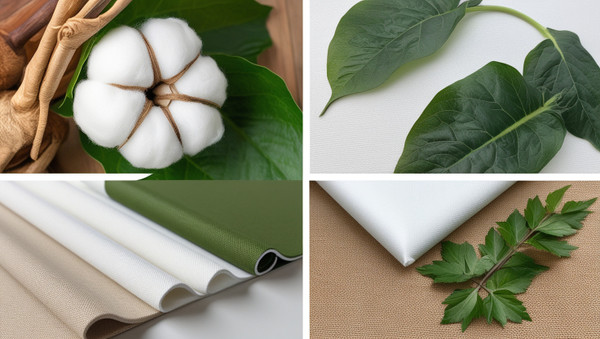Eco-Friendly Canvas Prints for a Greener Home
Posted by MintSuper Art on 23rd Dec 2024
Environmentally-friendly canvas prints are a great way to add beauty to a home. They also help protect our Earth. These prints use materials and inks that are safe for the environment. Many people want to decorate their homes without hurting the planet. This article will explain why eco-friendly canvas prints are the best choice. Keep reading to learn more about these wonderful options!
Key Takeaway
- Eco-friendly canvas prints use safe materials that help the environment.
- They are made with non-toxic inks that are better for indoor air quality.
- Choosing these prints supports artists and companies that care about sustainability.
Sustainable Choices in Canvas Printing
As more people look for eco-conscious décor, environmentally friendly canvas prints have become a popular option. These use recycled materials, water-based inks, and sustainable framing practices to reduce environmental impact while still delivering vibrant, long-lasting visuals. By choosing eco-friendly options, you can enhance your space without compromising your values.
Understanding Eco-Friendly Canvas Prints

Eco-friendly canvas prints offer a sustainable option for art and photography enthusiasts who value both aesthetics and the environment. These prints often feature organic cotton, a material cultivated without harmful pesticides or synthetic fertilizers. (1)
This chemical-free approach not only promotes healthier soil and water systems but also supports the well-being of farming communities. Additionally, the natural texture of organic cotton provides an elegant, high-quality surface that enhances the beauty of printed artwork.
Key Features of Eco-Friendly Canvas Prints:
- Organic Cotton: Grown sustainably without synthetic chemicals, ensuring minimal environmental impact.
- High-Quality Texture: Offers a smooth, natural finish perfect for vibrant, detailed prints.
Another innovation is the use of print-on-demand technology. By creating canvases only when ordered, this method:
- Minimizes Overproduction: Reducing waste and conserving resources.
- Lowers Carbon Footprint: Cutting down on emissions tied to storage and bulk shipping.
This thoughtful approach merges artistry with sustainability, delivering premium prints responsibly.
Non-Toxic Inks
Credits: Askari Art
Non-toxic inks are a key part of eco-friendly canvas prints. Many of these prints rely on water-based inks, which are free from harmful chemicals like volatile organic compounds (VOCs). These VOCs, often found in traditional inks, can release unpleasant smells and contribute to indoor air pollution. By choosing water-based options, the art becomes safer for homes and kinder to the environment.
This choice isn’t just about the planet—it’s about creating healthier spaces. Families can hang their favorite pieces without worrying about hidden toxins affecting their air quality. It’s a small shift that brings peace of mind, turning art into something both beautiful and safe.
Energy-Efficient Production
Energy-efficient production is at the heart of creating eco-friendly canvas prints, blending innovation with environmental responsibility. By employing advanced digital printing machines, companies significantly reduce energy consumption compared to traditional methods. This not only lowers pollution but also contributes to a cleaner, greener environment. These machines demonstrate how cutting-edge technology can align with sustainability goals without compromising on quality.
Sustainable Production Practices:
- Energy Efficiency: Advanced printers use less power, reducing environmental impact.
- Sustainable Processes: Designed to prioritize minimal energy consumption and eco-conscious operation.
Minimizing waste is another critical aspect of these efforts. Through meticulous planning, materials are used efficiently, ensuring minimal to no excess.
Benefits of Waste Reduction:
- Resource Optimization: Maximizing material use reduces overall waste.
- Smarter Production: A streamlined approach that aligns sustainability with efficiency.
This thoughtful production model delivers exceptional prints while supporting a healthier planet.
Benefits of Choosing Eco-Friendly Canvas Prints
Eco-friendly canvas prints offer more than just a way to brighten up a room. They help conserve natural resources by using sustainable materials like organic cotton or recycled polyester. These prints often rely on water-based inks, which reduce harmful chemical emissions compared to traditional printing methods.
Choosing them means cutting down on pollution and waste, which is a small but meaningful step toward protecting the planet. Plus, they can create a safer indoor environment, free from toxic fumes that some conventional prints might release. (2)
Supporting eco-conscious artists and companies also sends a powerful message. Each purchase encourages businesses to adopt greener practices, showing that sustainability matters to consumers. It’s like planting a seed for a better future—small actions that inspire bigger changes. And with so many designs and styles available, there's no need to compromise on aesthetics for the sake of the environment. Sustainable choices can be beautiful too.
Unique and High-Quality Art
Eco-friendly canvas prints bring something truly special to the table. Being crafted in smaller batches allows for more care and attention to detail, creating unique pieces that stand out. Each print becomes its own little masterpiece, perfect for adding a touch of charm to any space. The individuality of these prints makes them feel personal, almost like they were made just for the person who chooses them.
On top of that, the materials used are often high-quality, ensuring the prints can hold up over time without losing their appeal. They combine durability with sustainability, offering a way to enjoy favorite artwork or photos while making a thoughtful choice for the environment. It’s a win-win—beautiful decor and a lighter footprint on the planet.
Materials Used in Eco-Friendly Canvas Prints

Eco-friendly canvas prints often utilize biodegradable fibers like cotton and hemp, combining sustainability with quality. These natural fibers decompose over time, minimizing their environmental impact. Hemp stands out as a sustainable choice, growing quickly and requiring less water than many other crops. Meanwhile, cotton remains popular for its soft texture and versatility, offering a timeless appeal for art and décor enthusiasts. Both materials enable the creation of prints that leave a lighter footprint on the planet.
Eco-Friendly Material Highlights:
- Hemp: Durable, fast-growing, and water-efficient.
- Cotton: Soft, versatile, and naturally biodegradable.
Another sustainable option is the use of recycled materials, such as repurposed plastic bottles, in canvas production. This innovative approach reduces waste and transforms discarded items into high-quality prints.
Benefits of Recycled Materials:
- Waste Reduction: Diverts materials from landfills.
- Resource Conservation: Extends the lifecycle of existing resources.
Choosing prints made from biodegradable or recycled components is a meaningful way to support sustainable practices while enjoying beautiful artwork. (3)
Consumer Impact
Eco-friendly canvas prints aren’t just about decorating walls; they’re about making a difference. Choosing these prints supports companies that prioritize sustainability, pushing more businesses to adopt greener practices. It’s like a ripple effect—one thoughtful decision encouraging others to follow.
Materials like recycled polyester or organic cotton often go into these prints, reducing waste and lowering the carbon footprint. Even the inks used are often water-based, which means fewer harmful chemicals end up in the environment.
Small choices, like picking eco-friendly prints, can add up over time. Imagine if every household chose sustainable options—how much waste could be avoided? It’s not about being perfect but about doing what’s possible. Supporting these products sends a message that consumers care about the planet. And that message? It’s powerful.
FAQ
What makes canvas prints eco friendly and environmentally friendly?
Eco friendly canvas prints use sustainably sourced materials and recycled materials in their production. Many manufacturers now use recycled plastic for stretcher bars and print with water based inks. Some facilities even power their printing method with solar panels, making the whole process more energy efficient.
How do eco canvas prints compare to other photo canvas and metal prints options?
Eco friendly canvas prints offer high quality results similar to traditional canvas prints or metal prints. The main difference is in the materials and printing process. These prints use eco canvas and latex inks that are better for the environment while still delivering best quality results for your canvas photo.
What should I know about canvas material choices for custom canvas prints?
Cotton canvas is a popular choice for environmentally conscious buyers. Look for canvas material that's sustainably sourced. Many eco friendly canvas prints use recycled materials while maintaining the same high quality canvas standards you'd expect from traditional canvas art prints.
How are gallery wrapped and framed canvas prints prepared?
Gallery wrapped canvas prints are stretched over stretcher bars, while framed canvas prints include an additional frame. Both styles can feature either a mirrored edge or standard finish. The canvas frame construction often uses eco-friendly materials without compromising the durability of your canvas wall art.
What options are available for custom photo and canvas art prints?
You can create custom canvas prints in various sizes, from standard to extra large canvas prints. Many providers offer custom size options and photo collage layouts for your favorite photos. Whether you're looking for large canvas prints or a simple canvas print, most eco-friendly printers can accommodate your needs.
Where can I find high quality canvas prints for sale?
Many fine art photographers like Gwen Shockey, Ted Kinsman, Spencer Sutton, and Inga Spence offer their work through print on demand services. Look for providers offering free shipping on orders who prioritize global print sustainability standards.
Conclusion
In wrapping up, eco-friendly canvas prints are a wonderful choice for anyone looking to decorate their home. They use safe materials, non-toxic inks, and support sustainable practices. By choosing these prints, people can enjoy beautiful art while also helping the environment. Making smart choices today can lead to a better tomorrow for everyone.
References
- https://www.jondo.com/blog/2020/environmentally-fr...
- https://riversarelife.com/articles/embracing-eco-f...
- https://canvaskraft.com/blogs/canvas-kraft/the-ben...

